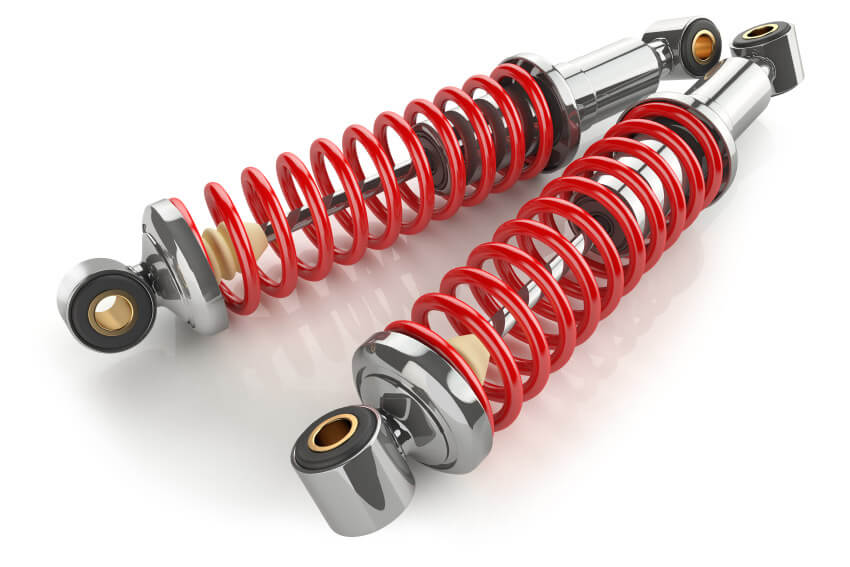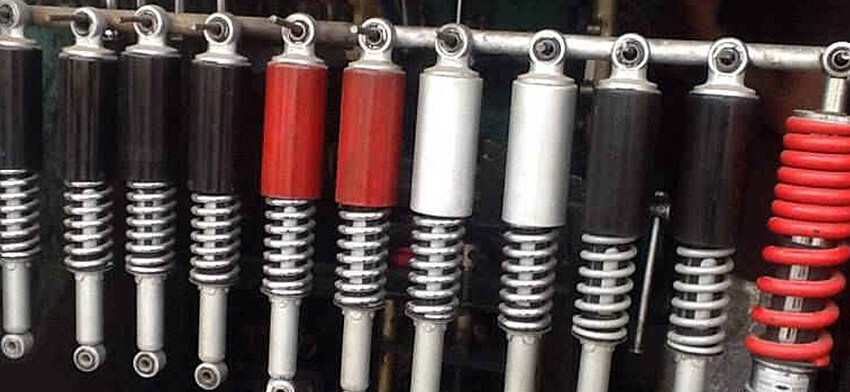
Diagnostics or testing of shock absorbers is an extremely important stage in checking the performance of the vehicle suspension. To give a correct assessment of the technical condition of shock absorbers, it is necessary to use special measuring devices that are available in car repair shops or are widely available in auto service equipment stores. They will help to identify the degree of wear or the presence of damage in individual parts of the disassembled shock absorber.
Only a few defects can be noticed by eye:
- oil leaks on the shock absorber housing;
- worn travel limiter;
- characteristic marks on the tread pattern.
Checking shock absorbers
Folk methods of checking or diagnosing, which consist of rocking the car from side to side or trying to stretch the shock absorbers manually – do not give reliable results. In professional auto repair shops, shock absorber diagnostics are carried out in three directions at once:
1. DETERMINING THE CAUSES OF LEAKAGE
This test is performed exclusively on a dry shock absorber, as traces of vehicle operation in the rain can completely distort the picture. If no marks remain when you run your finger over the dry part, then there is no problem with the shock absorber. The presence of oil condensation (“fog”) does not indicate a malfunction. This may be due to the piston rod taking oil from the working chamber during the working stroke.
2. EXTRANEN NOISE
A common cause of this malfunction is normal wear and tear due to long-term use, sand ingress, or prolonged driving with an incorrectly adjusted air suspension. Incorrectly observed tightening torque can lead to a violation of the anti-corrosion protection or the appearance of a thread imprint on the bushing.
3. MECHANICAL DAMAGE
Can appear due to improper assembly, which can lead to blocking of the unit, disruption of the threaded connection and disruption of the hinge eye.

Which shock absorbers are better?
This is one of the “eternal” topics of discussion. Motorists have long been arguing which type of these devices is better. Some consider oil shock absorbers to be almost ideal, while others, on the contrary, advocate for “gas”. This element must be selected based on the features and operating mode of a specific car. Let’s try to figure it out.
In oil shock absorbers vibrations are damped due to the low compressibility of the fluid, which flows from chamber to chamber. In this process, the oil heats up. This design has a number of drawbacks.
Firstly, there’s air in the chamber, and if its volume decreases, the oil passes through without significant effort—vibrations are not damped as effectively. Furthermore, during intensive driving on poor roads, the oil heats up faster and becomes runny, which doesn’t add to comfort. Don’t forget that in winter, the operating fluid simply gets stuck, and warming it up can be difficult. And driving on cold (that is, “stiff”) shock absorbers won’t suit everyone.
Air suspension
Gas-filled products, in turn, don’t change their shock-absorbing properties when cold weather sets in. They are stiffer and have a longer service life than oil-filled ones. One downside is the cost – these shock absorbers are more expensive than standard ones (depending on the manufacturer and model, the price can vary by 20% or even 30%). If the road is bumpy, the stiffness plays a nasty trick on other suspension components.
From this, it can be concluded that gas shock absorbers are more suitable for drivers who prefer an active driving style on good roads. Oil shock absorbers are an option for rougher roads. Their purchase will be appropriate if you are preparing to install it on an “older” car (everything is simple – the rigidity of the body in this case is far from the original, and a “softer” strut will not “break apart” the power structure).
Contact our car service, where experienced mechanics will provide you with a free professional consultation, and you can also sign up for diagnostics of your car.
,
WEBER-AUTO car service
194044, St. Petersburg
Neyshlotsky lane, house 5, building 3
District: Vyborgsky
Metro: Vyborgskaya – 800 m.
,
Seven days a week, from 9:00 to 21:00.
,
sto@veberauto.ru
,
8 (812) 321-00-00








